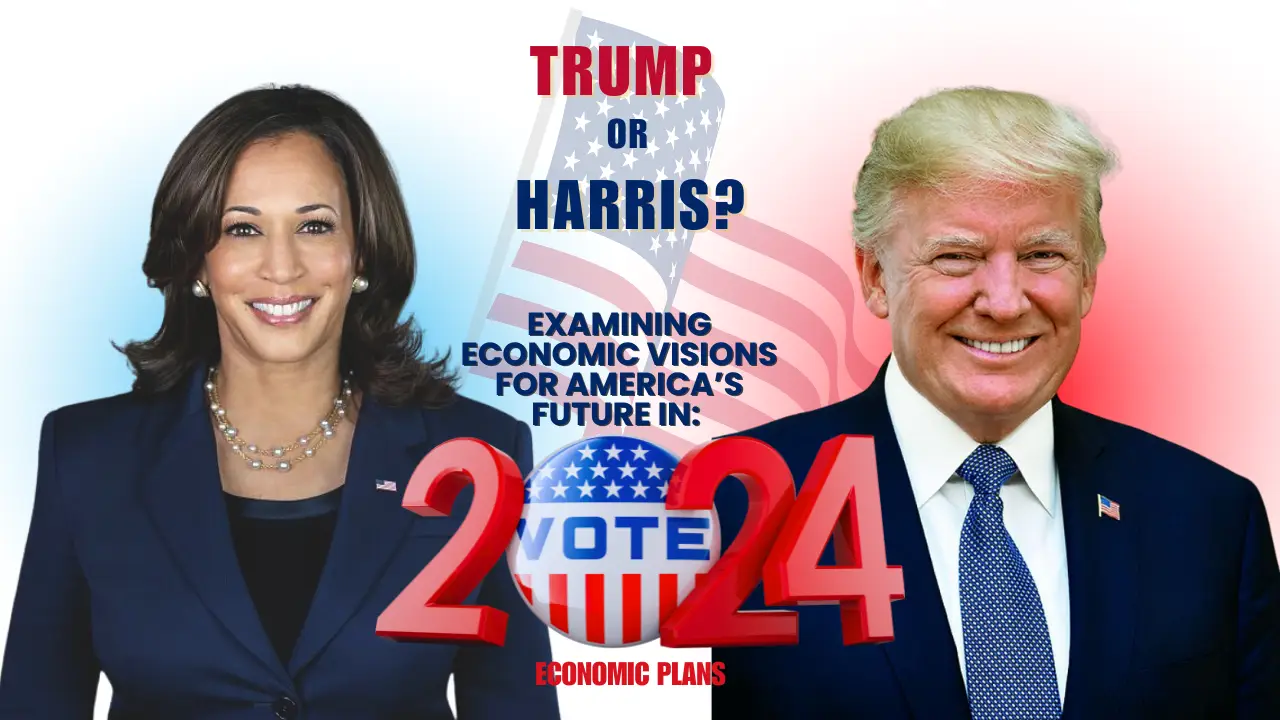
Comparing Trump and Harris’s Economic Policies: Key Differences and Impacts
Author
-

Fatemeh is a business strategy and M&A professional, with +5 years of international experience in heavy industry, and the financial & consulting industries- Her educational background is in Industrial Engineering & International Commerce
View all posts
Welcome to Alliance Leman’s blog! As the US presidential election draws near, understanding the candidates’ economic policies is crucial. In this post, we’ll explore *Trump vs. Harris Economic Policies*, delving into their key strategies, differences, and potential impacts.
Donald Trump economic policies
Donald Trump’s economic agenda centers on broad tax cuts and aggressive tariff policies. His hallmark achievement, the 2017 Tax Cuts and Jobs Act, significantly reshaped the US tax landscape by reducing the corporate tax rate from 35% to 21%, lowering individual income tax rates, and increasing the standard deduction. However, these changes are set to expire in 2025. If re-elected, Trump plans to extend and expand these reforms further. His proposals include:
- Lowering the Corporate Tax Rate: Trump aims to reduce the corporate tax rate even further, from the current 21% to 20%, and potentially to 15% for companies that manufacture within the United States. This move is designed to incentivize domestic production and attract more businesses to manufacture locally.
- Removing the Tax Deduction Cap: Under the 2017 reforms, there’s a cap of $10,000 on state and local tax deductions. This cap disproportionately affects taxpayers in high-tax states like New York and California. Trump plans to remove this cap, benefitting taxpayers in those regions.
Another key element of Trump’s economic strategy is his heavy reliance on tariffs. If re-elected, he intends to:
- Impose Across-the-Board Tariffs: Trump plans a 10-20% tariff on all imports into the US to protect American industries.
- Increase Tariffs on China: Trump proposes a steep 60% tariff on Chinese imports. Critics argue that these tariffs could raise costs for US consumers and harm the economy. Nevertheless, Trump maintains that they will restore US manufacturing and strengthen domestic industries
Kamala Harris economic policies
Kamala Harris’s economic policies contrast significantly with Trump’s approach. Harris emphasizes targeted tax relief for middle- and working-class families and strongly opposes Trump’s tariff strategy. Her economic plan focuses on supporting specific groups and industries through targeted tax cuts and incentives.
- Tax Relief for Middle-Class and Specific Groups: Harris’s approach includes providing tax credits for first-time homebuyers and expanding the child tax credit. Additionally, she proposes incentives for small businesses, such as increasing the deductible amount for startup costs to $50,000 in the first year.
- Industry-Specific Tax Credits: To stimulate strategic industries, Harris intends to introduce tax credits for sectors like AI, aerospace, biotech, and iron and steel manufacturing.
Harris also plans to address key economic issues like price gouging in essential sectors, such as groceries. She aims to implement policies to prevent price hikes in vital goods and services. Additionally, Harris proposes measures to increase the housing supply to address affordability challenges.
While Trump seeks to further reduce the corporate tax rate, Harris proposes increasing it to 28%, which remains lower than the pre-2017 level of 35%. Furthermore, Harris plans to increase the capital gains tax rate on earnings exceeding $1 million to 28%, a less aggressive rate than the 39.6% proposed by President Biden.
Key Differences Between Trump and Harris’s Economic Policies
- Scale of Tax Cuts: Trump’s tax cuts are broad and sweeping, focusing on reducing taxes across the board. In contrast, Harris’s policies are more targeted, prioritizing middle-class families and specific industries.
- Debt Impact: Both candidates’ plans are expected to increase the national debt, but Trump’s large-scale tax cuts could have a greater impact due to the lack of offsetting measures like reduced government spending.
- Use of Tariffs: Trump relies heavily on tariffs as part of his economic strategy, whereas Harris avoids using tariffs and prefers alternative economic management tools.
Conclusion
As the election nears, Trump and Harris’s economic policies reveal contrasting approaches to taxation, tariffs, and economic growth. Trump emphasizes broad tax cuts and tariff-based strategies to boost domestic manufacturing and provide sweeping financial relief. On the other hand, Harris focuses on targeted tax relief for the middle class, strategic industry growth, and increasing taxes on wealthier Americans and corporations to offset revenue loss.
Voters will need to consider which approach aligns with their priorities for economic growth, tax relief, and government revenue management. Understanding these differences is essential for making an informed decision in the upcoming election.
Read about Leadership Changes at Nike: Challenges and Opportunities here
